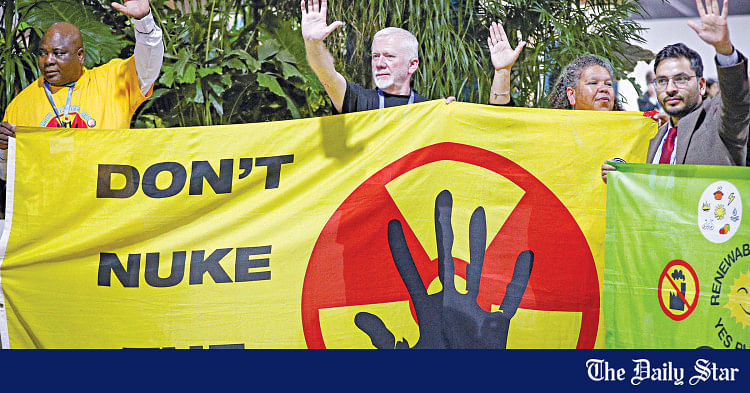Krishna with Flute
Senior Member
- Joined
- Jan 26, 2024
- Messages
- 4,287
- Reaction score
- 2,111
- Axis Group


Govt should ensure rights of rivers as juristic people
THE discharge of untreated industrial effluent into rivers continues with the authorities knowing fully well that such a situation would only push the rivers towards their death. The photograph...www.newagebd.net
Govt should ensure rights of rivers as juristic people
09 November, 2024, 00:00
THE discharge of untreated industrial effluent into rivers continues with the authorities knowing fully well that such a situation would only push the rivers towards their death. The photograph of a Shyampur stretch of the River Buriganga that New Age published on November 8 shows how untreated industrial effluent kills the river. In the wake of World Cities Day, observed on October 31, the photograph should serve as a pressing wakeup call for the government to take stern action against the pollution of rivers by way of the discharge of untreated industrial effluent. This is merely one point into the river where industrial effluent is discharged. There are thousands of industries around the capital Dhaka, bounded by four rivers and a canal — the Balu and Sitalakkhya on the east, the Turag and the Buriganga on the west, Tongi Canal on the north and the Dhaleshwari on the south. And the industries on the fringes of the capital and on the outer sides bordering the rivers keep polluting the rivers with their untreated effluent. There have been court directives for the government and its agencies to stop such pollution. There have been initiatives to stop such pollution that have fallen through or petered out.
But why do such initiatives have failed? They have so done, mostly because when it comes to the task on the ground, the agencies, a horde of them, start engaging in blame trade, with one in its effort to pass the blame for such a situation and the responsibility to stop such pollution onto others. There has also been noticeable incoordination between the agencies when they start trying to stop industries from discharging untreated effluent into the rivers. And, they usually do not do the job efficiently, effectively and seriously, leaving scopes for the polluting industries to continue with their marauding discharge once government initiatives stall and the furore that occasionally breaks out dies down. This has been a regular phenomenon, especially around occasions related to the cause of the environment, when green campaigners rise up to advance environmental causes, the court renews its efforts and the media make some report, censuring the government for its inaction. The High Court in February 2019 declared rivers to be ‘living entities’, rendering them as ‘juristic people’ having rights to be legally protected and put the rivers, as not being usual living entities, under the care of a guardian called the National River Conservation Commission. The court ordered river pollution, along with river grab, to be treated as criminal offences, noting that killing a river amounts to a collective suicide. Yet nothing substantial has so far happened.
It is, therefore, time that the government took an integrated approach to stop river pollution with untreated industrial effluent, by getting at the industries that have sprung along the rivers, not only around the capital city also across the country, forcing them to treat the effluent before the discharge into the rivers.
Government should make it a fundamental right to have clean and pollution free river water to all from river. First and foremost, thing is to maintain the water flow in river. We need lots of soil preservation and afforestation measures to maintain flow in river. A big moment in public private partnership is required to have rivers flowing with full flow once again.




















